Title
Irhal (Expel), hope and the sorrow of displacement
ongoing 2013-2019
Artist
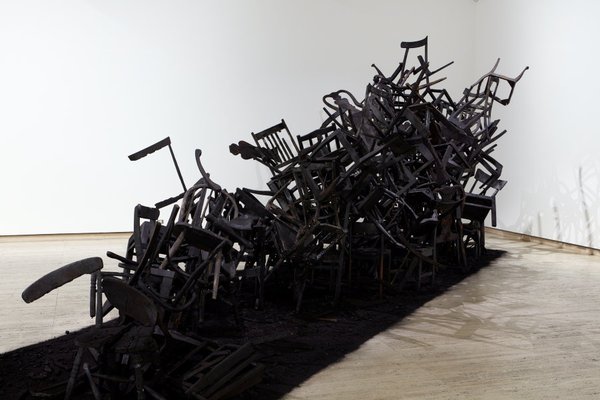
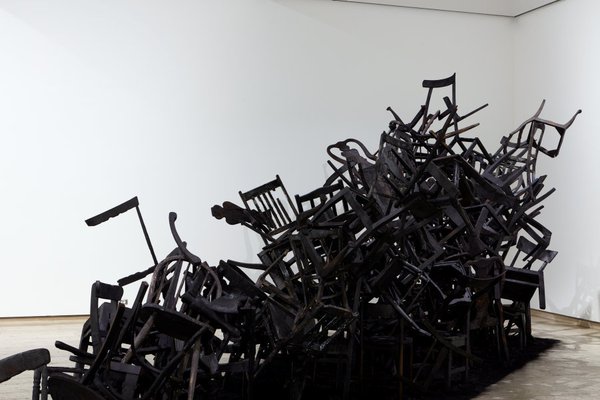
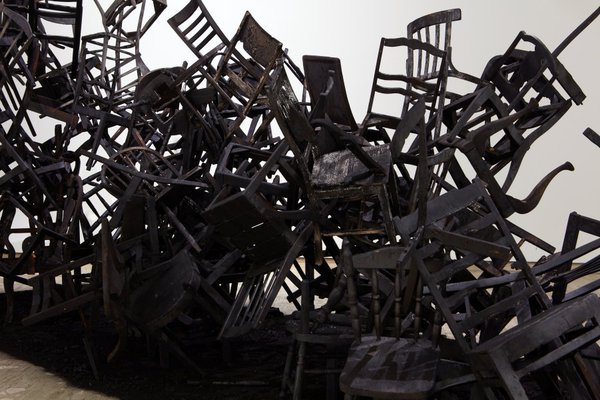
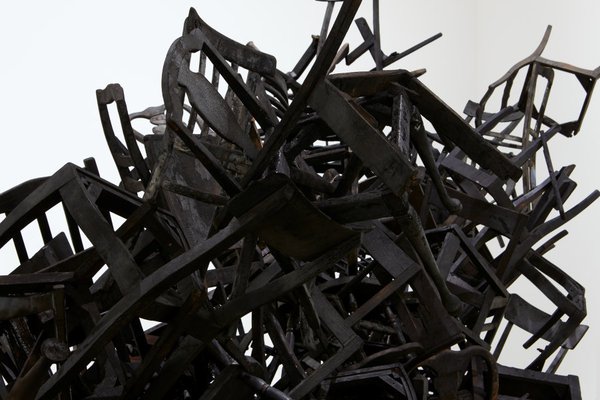
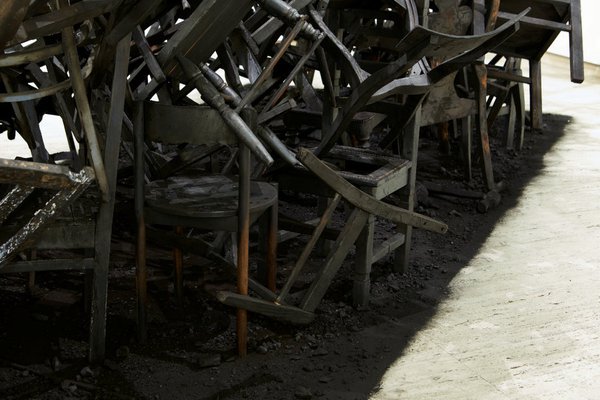
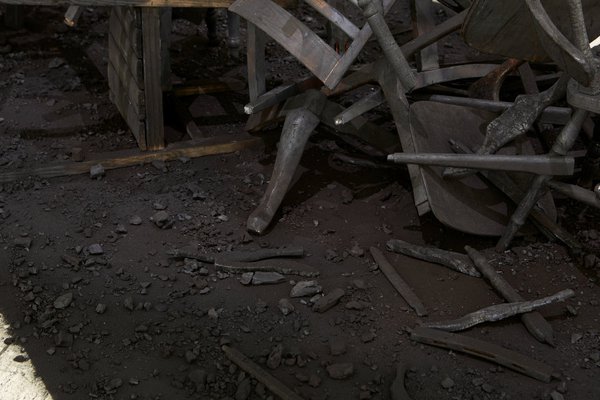
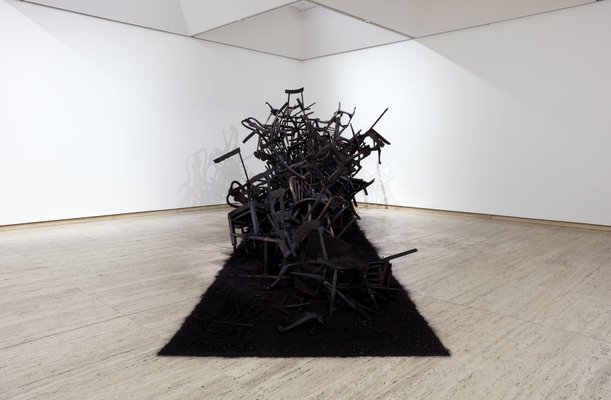
-
Details
- Cultural origin
- Kurdistan region
- Date
- ongoing 2013-2019
- Media categories
- Installation , Sculpture
- Materials used
- burnt wooden chairs, black oxide pigment, charcoal and ash
- Dimensions
- display dimensions variable
- Signature & date
Not signed. Not dated.
- Credit
- Contemporary Collection Benefactors 2019
- Location
- Not on display
- Accession number
- 164.2019.a-p
- Copyright
- © Rushdi Anwar
- Artist information
-
Rushdi Anwar
Works in the collection
- Share
-
-
About
When we sit on a chair we are held in place, stable and secure. A chair is a humble and familiar object. Its value is defined by the comfort it offers as much as its appearance. Many of us often take this comfort for granted.
In Rushdi Anwar's 'Irhal (expel), hope and the sorrow of displacement', chairs are piled perilously high. But these chairs can’t carry our weight – they can barely hold themselves up. Burnt to a crisp, transformed into charcoal, they form a ruin, a wreck, like a tragic tribute to dispossession and displacement. Through association and allegory, the installation speaks to Anwar's own experience of exile as a Kurdish refugee. Anwar's hometown was the site of a major chemical massacre in 1988 during the tail-end of the Iran-Iraq war. Anwar's childhood was marked by the conflict. Like many fellow Kurds, and so many other people, he was forced to flee his home. The chairs piled high are the ghosts of denied domesticity.
This cluster of charred wood has been caught mid-collapse yet the chairs have not fully disintegrated. They retain their form. We notice the gentle curve of a back rest here, the solidity of a leg there. They appear to resist their own destruction. The chaotic precarity of a makeshift funeral pyre becomes monumental. These chairs rise out from the charcoal-carpeted ground like a phoenix from the ashes.
There is strength written into their instability. Instruments of rest and relaxation become images of resilience. -
Exhibition history
Shown in 4 exhibitions
Hyphenated, The Substation, Newport, 22 Mar 2015–21 Apr 2015
Irahl (Expel), No Vacancy Gallery/ Project Space, Melbourne, 05 May 2015–23 May 2015
The Artist Project: Contemporary Art Fair 2016, Better Living Centre, Toronto, 18 Feb 2016–21 Feb 2021
The National 2019: New Australian art, Art Gallery of New South Wales, Sydney, 29 Mar 2019–21 Jul 2019
-
Bibliography
Referenced in 5 publications
-
Rushdi Anwar, Artist Profile, 'Rushdi Anwar', pg. 120-122, St Leonards, Nov 2013, 121 (colour illus., detail), 122.
-
Jennifer Down., The Saturday Paper, 'Healing wounds', Melbourne, 16 May 2015.
-
Nikki Lam., Peril Magazine: Marginasia, 'Interview with Rushdi Anwar: the ashes of war', Australia, 01 Sep 2015, n.pag.. accessed 9 Dec 2021, <https://peril.com.au/topics/arts/interview-with-rushdi-anwar-the-ashes-of-war/>
-
Isobel Parker Philip, The National 2019: New Australian Art, 'Black box logic', pg. 16-21, Sydney, 2019, 18, 60, 61 (colour illus.), 166.
-
Mediya Rangi, Anthropology of the Middle East, 'Hope and sorrow of displacement: diasporic art and finding home in exile', pg. 1- 15., Winter 2015, 1-15.
-
